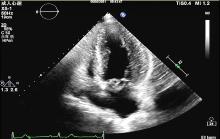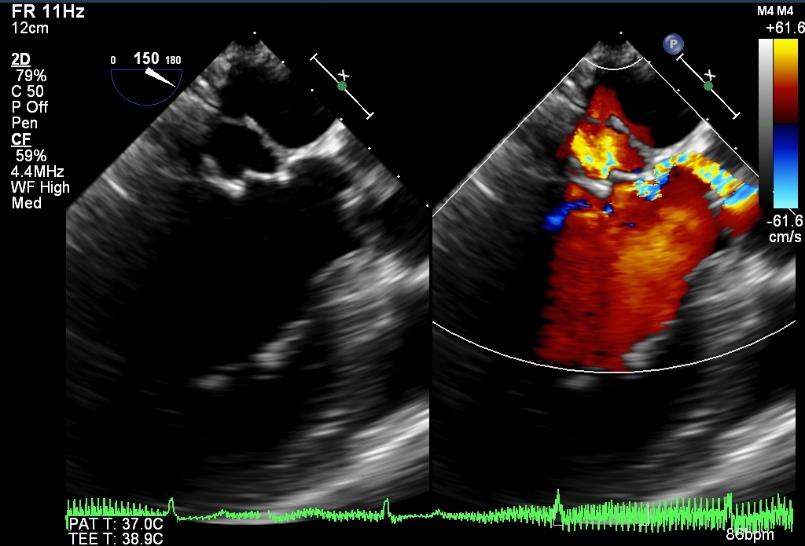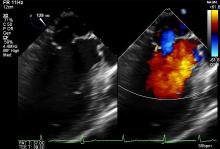| 1 |
JARCHO S. Aneurysm of heart valves (ecker, 1842)[J]. Am J Cardiol, 1968, 22(2): 273-276.
|
| 2 |
VILACOSTA I, ASAN ROMÁN J, SARRIÁ C, et al. Clinical, anatomic, and echocardiographic characteristics of aneurysms of the mitral valve[J]. Am J Cardiol, 1999, 84(1): 110-113, A9.
|
| 3 |
PENA J L B, BOMFIM T O, FORTES P R L, et al. Mitral valve aneurysms: Clinical characteristics, echocardiographic abnormalities, and possible mechanisms of formation[J]. Echocardiography, 2017, 34(7): 986-991.
|
| 4 |
IŞıLAK Z, UZUN M, YALÇıN M, et al. An adult patient with the ruptured aneurysm of mitral valve posterior leaflet[J]. Anatol J Cardiol, 2013, 13(5): E25.
|
| 5 |
AGARWAL A, NAIR K K M, VALAPARAMBIL A. Mitral valve leaflet diverticulum with vegetation-a rare complication in rheumatic heart disease[J]. Indian J Thorac Cardiovasc Surg, 2021, 37(3): 326-328.
|
| 6 |
ZEGRÍ I, MOÑIVAS V, MINGO S, et al. Ruptured aneurysm of anterior mitral leaflet in aortic valve infective endocarditis[J]. Echocardiography, 2015, 32(4): 720-722.
|
| 7 |
RYU Y G, BAEK M J. Fibrous skeleton endocarditis causing septated aneurysm on the anterior mitral leaflet[J]. Eur Heart J, 2010, 31(9): 1123.
|
| 8 |
DECROLY P, VANDENBOSSCHE J L, ENGLERT M. Anterior mitral valve aneurysm perforation secondary to aortic valve endocarditis detected by Doppler colour flow mapping[J]. Eur Heart J, 1989, 10(2): 186-189.
|
| 9 |
CHUA S O, CHIANG C W, LEE Y S, et al. Perforated aneurysm of the anterior mitral valve A Doppler and two-dimensional echocardiographic report[J]. Chest, 1990, 97(3): 753-754.
|
| 10 |
EDWARDS J E. Mitral insufficiency secondary to aortic valvular bacterial endocarditis[J]. Circulation, 1972, 46(3): 623-626.
|
| 11 |
ENGLISH T A, HONEY M, CLELAND W P. Ruptured true aneurysm of mitral valve. A complication of aortic valve endocarditis[J]. Heart, 1972, 34(4): 434-436.
|
| 12 |
EDYNAK G M, RAWSON A J. Ruptured aneurysm of the mitral valve in a Marfan-like syndrome[J]. Am J Cardiol, 1963, 11(5): 674-677.
|
| 13 |
TAKAYAMA T, TERAMURA M, SAKAI H, et al. Perforated mitral valve aneurysm associated with libman-sacks endocarditis[J]. Intern Med, 2008, 47(18): 1605-1608.
|
| 14 |
KIM D J, CHO K I, JUN H J, et al. Perforated mitral valve aneurysm in the posterior leaflet without infective endocarditis[J]. J Cardiovasc Ultrasound, 2012, 20(2): 100-102.
|
| 15 |
DE CASTRO S, ADORISIO R, PELLICCIA A, et al. Perforated aneurysms of left side valves during active infective endocarditis complicating hypertrophic obstructive cardiomyopathy[J]. Eur J Echocardiogr, 2002, 3(2): 100-102.
|
| 16 |
BEALE R A, RUSSO R, BEALE C, et al. Mitral valve blood cyst diagnosed with the use of multimodality imaging[J]. CASE (Phila), 2021, 5(3): 173-176.
|
| 17 |
KUVIN J, SAHA P, RASTEGAR H, et al. Blood cyst of the mitral valve apparatus in a woman with a history of orthotopic liver transplantation[J]. J Am Soc Echocardiogr, 2004, 17(5): 480-482.
|
| 18 |
RUISANCHEZ VILLAR C, GONZALEZ LIZARBE S, LERENA SAENZ P, et al. Spontaneous healing of a ruptured mycotic aneurysm of the posterior mitral leaflet: Unexpected resolution of a severe mitral regurgitation[J]. Echocardiography, 2021, 38(4): 681-685.
|
| 19 |
VIEIRA M L, POMERANTZEFF P M, PILLCO L L, et al. Conservative surgical treatment of anterior mitral valve aneurysm secondary to aortic valve endocarditis [J]. Echocardiography, 2003, 20(5): 435-438.
|
| 20 |
KOLLURU A, BEHERA S, DAMARLA V, et al. Perforation of anterior mitral valve leaflet aneurysm: complication of enterococcus faecalis infective endocarditis[J]. Cureus, 2020, 12(9): e10249.
|
| 21 |
ZARRINI P, ELBOUDWAREJ O, LUTHRINGER D, et al. Rare mycotic aneurysm of the mitral valve without aortic valve involvement[J]. Echocardiography, 2015, 32(9): 1428-1431.
|
| 22 |
WANG Y, WANG S, CHEN D D, et al. Mitral valve aneurysms: echocardiographic characteristics, formation mechanisms, and patient outcomes[J]. Front Cardiovasc Med, 2023, 10: 1233926.
|
| 23 |
LUO Y R, TAN H W, WANG J R, et al. Accurate and rapid diagnosis of complex mitral valve aneurysm with neoplasm via real-time 3D transesophageal echocardiography[J]. 2022, 25(3): E403-E406.
|
| 24 |
张 双, 王仲华, 侯玉桃. 经食管超声心动图分析左心耳内部形态结构对左心耳封堵术的指导价值[J]. 中国医学物理学杂志, 2021, 38(11): 1377-1380.
|
| 25 |
LI J Y, ZHOU L, GONG X H, et al. Abiotrophia defectiva as a rare cause of mitral valve infective endocarditis with mesenteric arterial branch pseudoaneurysm, splenic infarction, and renal infarction: a case report[J]. Front Med (Lausanne), 2022, 9: 780828.
|
 ),Sibao YANG2,Shaomin SHI3
),Sibao YANG2,Shaomin SHI3











